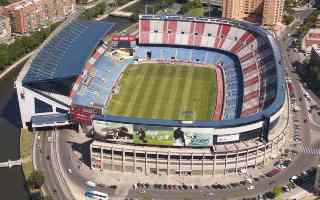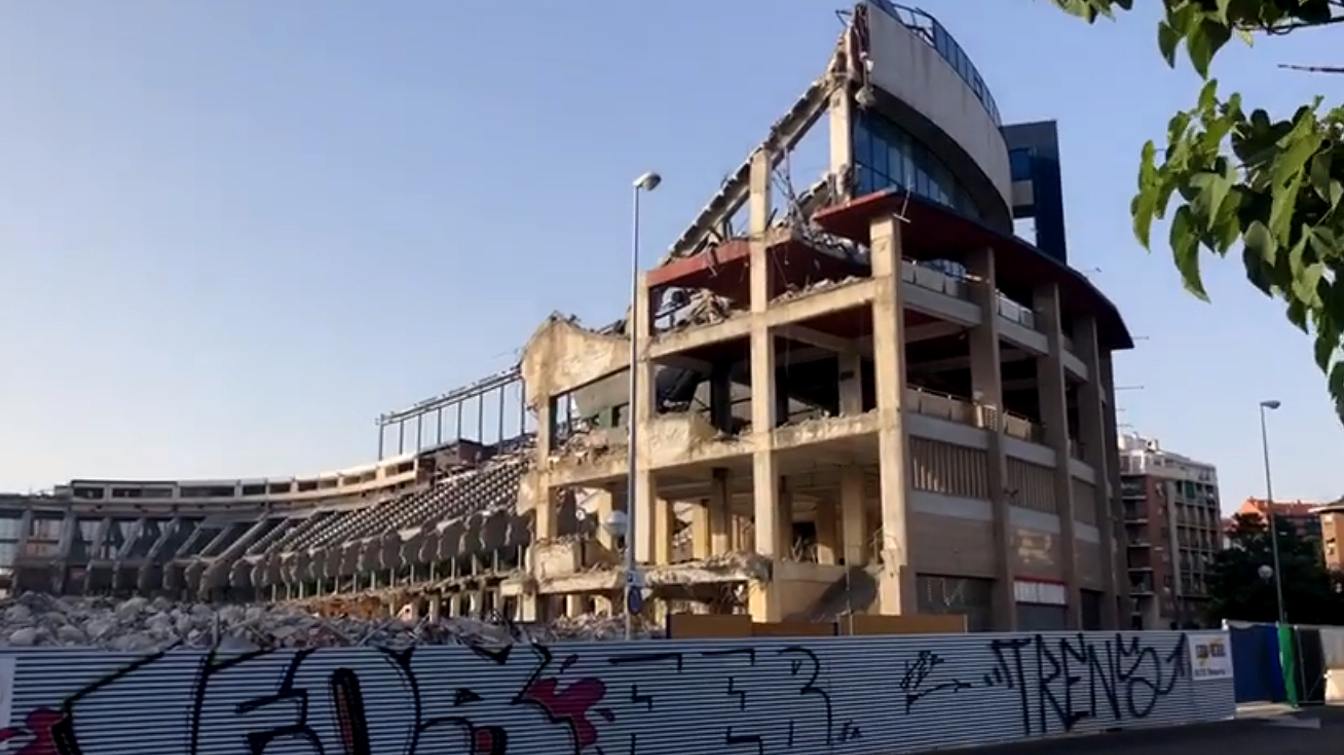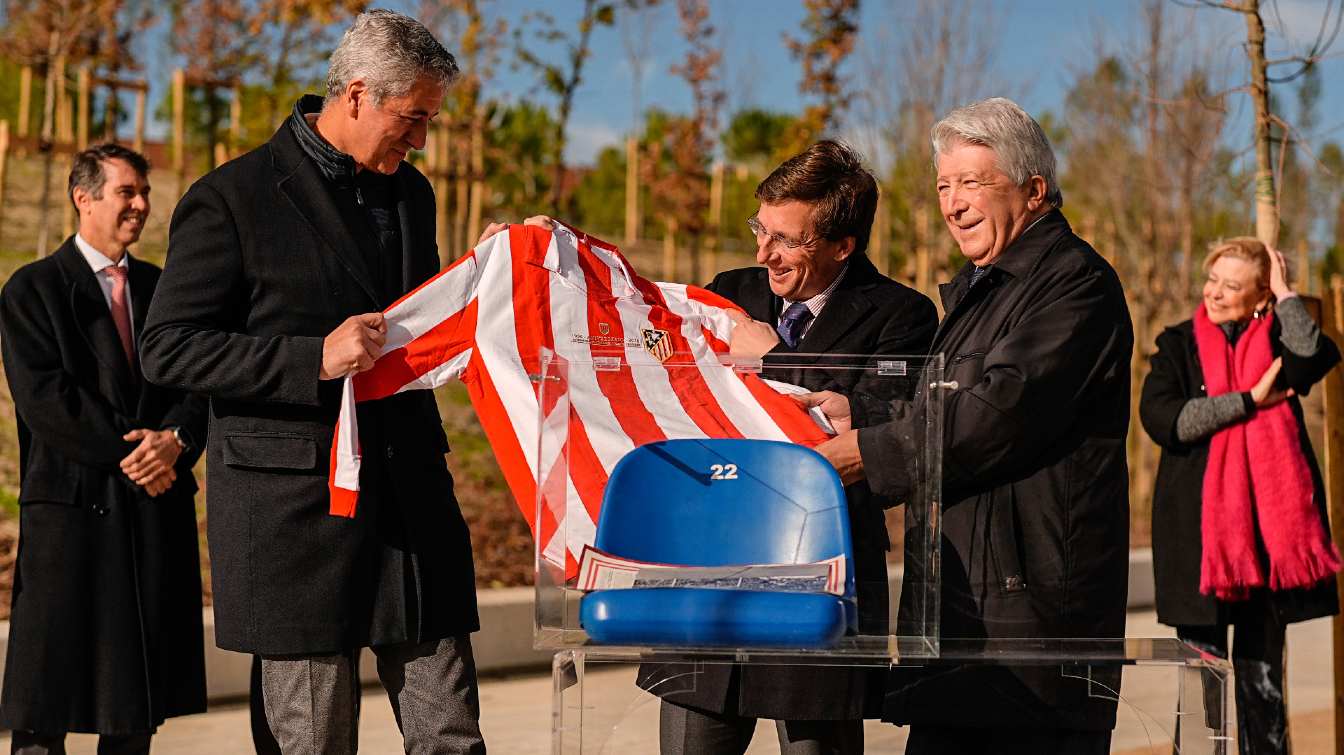Spain: Time capsule and plaque are now the only remains of Atletico's legendary stadium
source: StadiumDB.com; author: Miguel Ciołczyk Garcia
 A ball where the centre of the pitch used to be. Under the ground - a time capsule with a chair, an Atleti jersey and a piece of concrete. And around, a park with a running track. Estadio Vicente Calderon now lives only in fans' memories, but its tradition is continued by the modern Metropolitano and... a stadium of an Iranian second-tier club.
A ball where the centre of the pitch used to be. Under the ground - a time capsule with a chair, an Atleti jersey and a piece of concrete. And around, a park with a running track. Estadio Vicente Calderon now lives only in fans' memories, but its tradition is continued by the modern Metropolitano and... a stadium of an Iranian second-tier club.
Advertisement
An unusual demolition
On 28 May 2017, a team of Atletico legends came out onto the turf of Estadio Vicente Calderón to face a team formed by world legends. And although the hosts lost 4:5, the fans didn’t really care. After more than half a century and 1,227 games, Rojiblancos were saying goodbye to the mythical stadium that had given them 775 victories and contributed to winning five La Liga titles. After the final whistle was blown, the doors of the Vicente Calderón slammed shut forever.
Although many were deeply moved by the news of the arena's demolition, from the club's point of view it was necessary. Atletico Madrid gained €182M from the sale of the ground, nearly 60% of the cost of building Estadio Metropolitano. Interestingly, with the move to the new venue, the club had to take with it... the urns containing the ashes of fans, who had been buried at the Vicente Calderón in previous years.
The demolition, which took a year and a half, was not typical. Workers started by stripping and demolishing the inside of the venue, and only then did the facade collapse. WThey demolished the north, east and south stands to make way in their place ... for a diversion of a nearby tunnel. The lonely west stand thus gradually disappeared before the eyes of passing motorists. On 2 July 2020, in front of a small group of fans, the last piece of Vicente Calderón collapsed.
 Due to the dense high-density development in the area, no explosives were used to demolish Vicente Calderon, only machinery.
Due to the dense high-density development in the area, no explosives were used to demolish Vicente Calderon, only machinery.
A time capsule and a commemorative plaque
The site of the old stadium was later turned into the Atlético de Madrid Park. The city planted trees in the small area and created a 700-metre treadmill for amateur runners. Rojiblancos fans, however, will find two elements to remind them that the cheers of almost 55,000 throats once thundered in the place of this now quiet park: a carved-in-stone ball at the exact same place where the centre of the pitch used to be, and a time capsule buried underground.
The latter was completed jointly by Madrid mayor José Luis Martínez-Almeida and Atlético president Enrique Cerezo. During the park's opening ceremony on 9 December 2024, they put a chair from the stands, a club jersey, a piece of the old Vicente Calderón, a black and white photo of the first goal at the stadion, a piece of turf, posters from the first and last match and the Atleti flag into a glass container. Workers then lowered it underground and covered it with a stone with a carved image of the Estadio Vicente Calderón, its name and the inscription 1966-2017.
This day combines nostalgia, emotion and joy,
Cerezo said.
 At the initiative of the Madrid City Hall, the site of the old stadium was turned into a park with 1,200 trees. In the photo, Mayor Almeida (centre) hides the Atletico jersey in a time capsule with the club president (right).
At the initiative of the Madrid City Hall, the site of the old stadium was turned into a park with 1,200 trees. In the photo, Mayor Almeida (centre) hides the Atletico jersey in a time capsule with the club president (right).
The Iranian relative
Vicente Calderón's legacy is not limited to memories and the park, however, as it has a relative in Iran. In 2006, when Atletico's home on the Manzanares River was still one of the most recognisable stadiums in Europe, the architects of the Shahid Raisi Stadium copied the distinctive layout of the stands (the main stand separated from the rest), although on the outside they gave it distinct local touches.
However, construction took not 18 months, as expected, but as long as 18 years, resulting in the stadium not being handed over to its host - second-tier Mes Kerman FC - until June 2024. And that, in turn, means that the 30,000-seater was among the 23 venues nominated for our Stadium of the Year 2024 competition.
Advertisement
 StadiumDB
StadiumDB